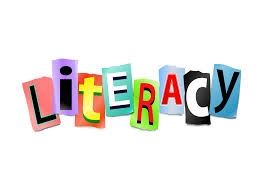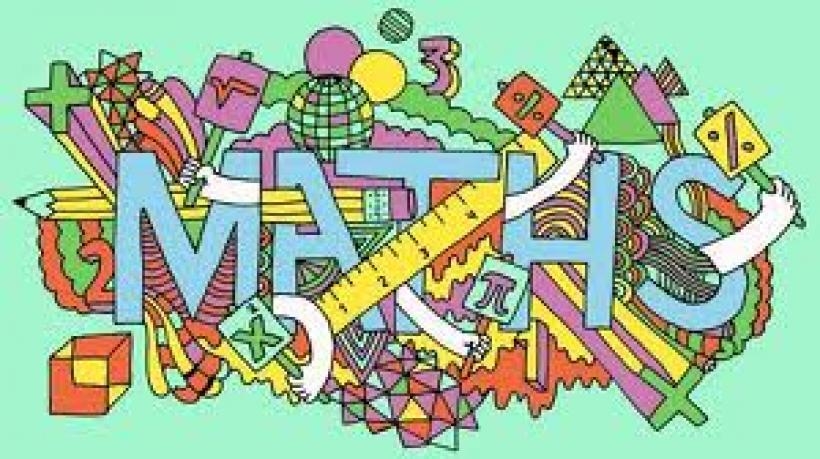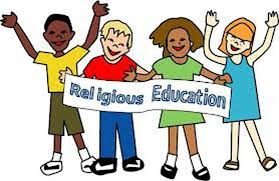

According to legend, St. Christopher was extremely tall, and by some accounts he was even a giant! He is referred to as a Canaanite. We think this is unlikely, but he was surely a man of significant physical stature. St. Christopher found a hermit who taught him all about Christ, the King of Kings. The hermit suggested that he spend his life in prayer and fasting, a thing which St. Christopher, a large and probably often hungry man found difficult, he objected. The hermit suggested he then find something else that would please Christ. St. Christopher offered to work at a nearby river, and help travellers across. The fording was dangerous and many with less strength people had drowned. The hermit advised St. Christopher this would please Christ.
One day, a child approached St. Christopher by the river and asked to be helped across. St. Christopher obliged. However, as he entered midstream, the river rose and the child's weight grew and became extremely heavy. It was only by great exertion that St. Christopher safely delivered the child to the other side. When St. Christopher asked the child why he was so heavy, the child explained that He was the Christ and when St. Christopher carried Him, he also carried the weight of the whole world on his shoulders. The child then vanished. Other legends state that St. Christopher travelled after this experience and evangelized thousands of people.
Mrs Brennan is our class teacher in St Christopher. Mrs Bertolino is our Teaching Assistant.



EXPLANATION TEXTS- CRIME AND PUNISHMENT
-
To sequence, summarise and order events.
-
To retrieve facts from a text.
-
To explain and justify using evidence from the text.
-
I can write using conjunctions.
-
I can identify new words when I read and discuss their meaning in context
-
Draft
-
To edit and up-level.
BIOGRAPHY WRITING- BRITISH INVENTORS
-
To explain and justify using evidence from the text.
-
To use the passive voice
-
To use time conjunctions
-
To use parenthesis
-
To summarise and order information.
-
Draft
-
To edit and up-level.
FAMOUS ARTISTS
-
Select vocabulary and grammatical structures that reflect what the writing requires, doing this mostly appropriately.
-
Use the range of punctuation taught at key stage 2 correctly
-
Use a range of devices to build cohesion
-
To use conjunctions.
-
To use modal verbs.
-
To use the passive voice.
-
To use reported speech.
-
To use semi-colons.
-
Draft
-
To edit and up-level.
UNTOLD FAIRY STORIES
-
Select vocabulary and grammatical structures that reflect what the writing requires, doing this mostly appropriately.
-
Use the range of punctuation taught at key stage 2 correctly
-
Use a range of devices to build cohesion
-
To use relative clauses.
-
To use subordinating clauses.
-
To use ellipses for effect.
-
To use a thesaurus to improve vocabulary.
-
To use comparatives and superlatives.
-
Draft
-
To edit and up-level.
Click on the link below for helpful information and activities which are all literacy based;




WEEKS1 &2
MULTIPLICATION AND DIVISION B Step 1 Multiply a unit fraction by an integer
Step 2 Multiply a non-unit fraction by an integer
Step 3 Multiply a mixed number by an integer
Step 4 Multiply fractions by fractions
Step 5 Divide a fraction by an integer
Step 6 Divide any fraction by an integer
Step 7 Fraction of an amount
Step 8 Fraction of an amount – find the whole
WEEK 3 & 4
DECIMALS A
Step 1 Decimals up to 2 decimal places
Step 2 Decimals up to 3 decimal places
Step 3 Place value – integers and decimals
Step 4 Order and compare decimals (same number of decimal places)
Step 5 Order and compare any decimals with up to 3 decimal places
Step 6 Round to the nearest whole number
Step 7 Round to 1 decimal place
Step 8 Round to 2 decimal places
WEEK 5 & 6
AREA PERIMETER AND VOLUME
Step 1 Perimeter of rectangles and rectilinear shapes
Step 2 Area of rectangles
Step 3 Area of compound shapes
Step 4 Estimate area
Step 5 Area of triangles
Step 6 Area of parallelograms
Step 7 Volume – cubic centimetres
Step 8 Volume of a cuboid
Step 9 Compare volume
Step 10 Estimate volume and capacity
WEEKS 7,8,9
DECIMALS B
Step 1 Use known facts to add and subtract decimals within 1
Step 2 Complements to 1
Step 3 Add and subtract decimals across 1
Step 4 Add decimals with the same number of decimal places
Step 5 Subtract decimals with the same number of decimal places
Step 6 Add decimals with different numbers of decimal places
Step 7 Subtract decimals with different numbers of decimal places
Step 8 Efficient strategies
Step 9 Decimal sequences
Step 10 Multiply by 10, 100 and 1,000
Step 11 Divide by 10, 100 and 1,000
Step 12 Multiply decimals by integers
Step 13 Divide decimals by integers
Step 14 Multiply and divide decimals in context
WEEKS 10- 11
FRACTIONS, DECIMALS AND PERCENTAGES
Step 1 Equivalent fractions and decimals – tenths
Step 2 Equivalent fractions and decimals – hundredths
Step 3 Equivalent fractions and decimals – thousandths
Step 4 Fractions as division
Step 5 Understand percentages
Step 6 Percentages as fractions
Step 7 Percentages as decimals
Step 8 Equivalent fractions,
decimals and percentages
Step 9 Order fractions, decimals and percentages
Step 10 Percentage of an amount

























YEAR 6 Living things, classifying big and small
Broadening children’s knowledge of grouping vertebrates, invertebrates, plants and micro-organisms by shared characteristics, the children learn about Carl Linnaeus’s development of the Linnaean and binomial classification systems and use branching and number keys to sort and identify organisms.
Pupils who are secure will be able to:
-
Define the term ‘organism’ and name the seven life processes of all living things.
-
Describe the work of Carl Linnaeus.
-
Define the term ‘vertebrate’ and name the vertebrate groups.
-
Describe the characteristics of fish, amphibians, reptiles, birds and mammals.
-
Compare the characteristics of the vertebrate groups.
-
Define the term ‘invertebrate’.
-
Describe the characteristics of worms, snails, spiders and insects.
-
Compare the characteristics of the invertebrate groups.
-
Name the plant groups.
-
Describe the characteristics of flowering plants, ferns, mosses and conifers.
-
Define the term ‘micro-organism’ and name some examples.
When working scientifically pupils who are secure will be able to:
-
Use a classification key to group and identify organisms.
-
Make a simple classification key.
Click on the link below for helpful information and activities which are all science based;




To The Ends of the Earth:
Pupils will continue to journey with St John’s gospel in this branch. Pupils started the year learning about the Fall and humanity’s broken relationship with God. In this branch, they will look at how St John’s account of the Resurrection alludes back to that narrative and shows that in Jesus the relationship with God is restored.
Dialogue to Encounter Year 6:
Pupils do not need to know the language of dialogue, but teachers should consider how they and others experience neighbourliness, collaboration, and sharing spiritual riches. This could be practically in projects (such as focusing on caring for our common home in their local area), learning about the lives of those committed to interreligious dialogue. or charitable organisations that work for justice and freedom. The children will be encouraged to explore ‘worldviews’ and explore the Hindu faith.



Sing up Music Scheme:
Unit: Hey Mr Miller
Focus: Swing music, syncopation, swing rhythm, big band instruments, scat singing,
social and historical context (WWII, segregation) progression snapshot 1.
Objectives:
• Compose a syncopated melody using the notes of the C major scale.
• Sing a syncopated melody accurately and in tune.
• Sing and play a class arrangement of the song with a good sense of ensemble.
• Listen to historical recordings of big band swing and describe features of the music using music vocabulary

.gif)
.gif)
.gif)
History
The Victorians
The children will be learning;
To put the Victorian period into historical context. To use historical sources to find out about the Victorian period. To find out about the life of Queen Victoria. To think about why Victoria became such a popular monarch. To find out about some famous Victorian inventions. To explain how new inventions changed people’s lives during the Victorian period.
To find out what the Industrial Revolution was. To explain how Victorian Britain was changed by the Industrial Revolution.
To find out how the introduction of the railways changed travel and trade. To explain different viewpoints about the new railways. To find out what sort of jobs were taken by Victorian children. To explore what life was like for Victorian working children. To explore why Lord Shaftesbury was an important Victorian figure. To find out how Lord Shaftesbury’s campaigns improved children’s lives during the Victorian period.
To find out about typical crimes and punishments in the Victorian period. To compare Victorian punishments to the modern-day justice system. To understand what an empire is and how Britain developed its Empire. To explore how trade changed during the Victorian period.



Computing systems and networks: Search engines
Understanding how search engines work and developing searching skills to find relevant and accurate information online.
Pupils who are secure will be able to:
-
Explain what a search engine is, suggest several search engines to use and explain how to use them to find websites and information.
-
Suggest that things online are not always true and recognise what to check for.
-
Explain why keywords are important and what TASK stands for, using these strategies to search effectively.
-
Recognise the terms ‘copyright’ and ‘fair use’ and combine text and images in a poster.
-
Make parallels between book searching and internet searching, explaining the role of web crawlers and recognising that results are rated to decide rank.
Data handling 1: Big Data 1
Understanding about the use of big data including barcodes, QR codes, infrared, and RFID technologies. Children will create and scan their own QR codes, manipulate real-time data in spreadsheets, and present their findings. They also analyse transport data to understand its usefulness to commuters.
Pupils who are secure will be able to:
-
Understand why barcodes and QR codes were created.
-
Create (and scan) their own QR code using a QR code generator website.
-
Explain how infrared can be used to transmit a Boolean type signal.
-
Explain how RFID works, recall a use of RFID chips, and type formulas into spreadsheets.
-
Take real-time data and enter it effectively into a spreadsheet.
-
Presenting the data collected as an answer to a question.
-
Recognising the value of analysing real-time data.
-
Analyse and evaluate transport data and consider how this provides a useful service to commuters.



-
Lessons Planned and taught by External Sports Company Non-Stop Action.
Indoor PE (taught by tNon-Stop Action)

ART
Cultural Tradition in Art
The children will be able;
To recognise that many cultures use art in order to tell stories.
To investigate the art from a particular culture.
To investigate and understand what is meant by folk art.
To identify the features of folk art.
To use the materials of Indian folk artists to create my own piece of art in the style of Madhubani.
To realise that some cultures share the same features and theat patterns are used as a recurring effect throughout cultural art.
To explore the media and materials which may be used in the cultural art process.
To begin to explore the Cultural Tradition artist Richard Kimbo.
To explore the process used by Richard Kimbo when creating his batiks.
To explore how batik has been used in fashion and renamed Madiba shirts.
To have a go at sketching my own batik clothing design.
To explore Kimbo’s use of colour in his batiks.
To have a go at creating my own batik design of a bustling African city.
DEVELOPING A RECIPE
Learning a simple bolognese recipe and adapting it to improve nutritional content, this unit provides new lessons with teacher and pupil videos to develop the children’s food preparation skills.
Pupils who are secure will be able to:
Prepare and cook a version of bolognese sauce.

SRE
Module 2: Created to Love Others
UKS2 Module Two: Created to Love Others explores the individual’s relationship with others. Building on the understanding that we have been created out of love and for love, this module explores how we take this calling into our family, friendships and relationships, and teaches strategies for developing healthy relationships and keeping safe both online and in our daily
Unit 1 – Religious Understanding explores the nature of God’s call to love others. Children will study and reflect imaginatively on the story of Zacchaeus’ conversion and explore ways in which they can hear God’s call in their lives.
UNIT 2 - Through a series of short sketches from presenters Zoe and Joey, Unit 2 – Personal Relationships aims to equip children with strategies for more complex experiences of relationships and conflict. This covers how to respond to spoken and unspoken pressure, the concept of consent and further teaching on how our thoughts and feelings have an impact on how we act. The concept of fairness is introduced, where pupils will consider what bullying, prejudice and discrimination are. A series of Classroom Shorts further explore how to recognise and respond to prejudice and discrimination. Focus is also given to what attraction is and children will also explore the concept of gender stereotypes and how these stereotypes might make us feel. This is all presented within the Christian belief that everyone is made in the image and likeness of God, is loved unconditionally by Him, has equal dignity and is deserving of equal respect.
UNIT 3 -Life Online builds on the NSPCC Share Aware resources used in Lower Key Stage Two, equipping children to make safe and sensible decisions about what online content they should/shouldn’t share, cyberbullying and how to report and get help if they encounter inappropriate messages or material. A deeper dive into why and how we should think critically about the content we consume is covered within Classroom Shorts.
UNIT 4 - After learning about Online Safety, Unit 4 – Keeping Safe considers safety in the real world beginning with the four types of abuse: sexual, physical, emotional and neglect. Children will learn how to spot each type of abuse and who they can go to for help. Children will also learn more about practices against British law and how forced marriage is not compatible with God’s plan for marriage. The final three sessions in this module explore how drugs, alcohol and tobacco can negatively affect people’s lifestyles and the body’s natural functioning, discuss how to make good choices even in pressured situations, and teach essential First Aid such as DR ABC and the recovery position.